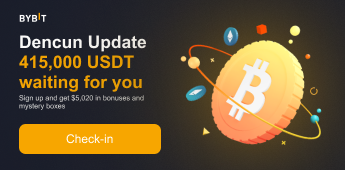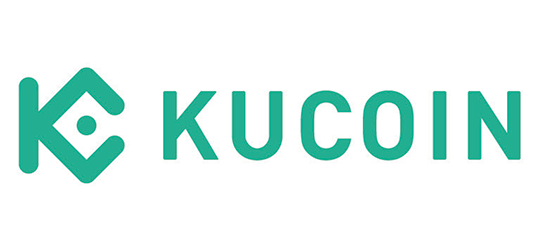
What is Pendle and How This DeFi's Yield Trading Protocol Works?
Discover Pendle Protocol and explore the possibilities of advanced yield strategies and efficient yield trading. Learn how Pendle is reshaping the DeFi landscape and unlocking the full potential of yield optimization. With its unique features like tokenized future yields, an advanced AMM system, and a robust governance mechanism, Pendle empowers users to maximize profits in any market condition.
What is Pendle?
Pendle Finance is a permissionless DeFi protocol that enables the tokenization and exchange of future yields through a automated market maker (AMM). This yield-trading protocol, which operates on the Ethereum network and EVM-compatible chains like Arbitrum and Avalanche, presents a platform for users to deploy an array of sophisticated yield strategies. Pendle primarily empowers both individuals and protocols to optimize their returns, regardless of the market circumstances.
The core objective of Pendle Finance is to establish a digital environment for cryptocurrency enthusiasts in possession of yield-producing assets. This platform offers a time decay feature, which aids users in enhancing their profits and securing potential gains in advance. Moreover, the protocol is designed to provide traders with direct access to future yield flows, eliminating the necessity for underlying collateral. To achieve this, Pendle utilizes three fundamental elements, which are:
- Yield Tokenization
- Automated Market Maker (AMM)
- Governance
Pendle Protocol Background
Pendle Protocol, which officially launched in June 2021. The project was developed by a group of anonymous individuals known by their pseudonyms TN Lee, GT, YK, and Vu. With its headquarters based in South Korea, Pendle has attracted significant attention and support from notable investors, including Bitscale Capital, Crypto.com Capital, Fisher8 Capital, and Strategic Round Capital, who collectively contributed $3.7 million in funding.
Since its launch, Pendle has experienced remarkable growth, with trading volume surpassing $350 million.
Pendle Protocol is currently operational on two major blockchain networks: Ethereum and Avalanche. On Ethereum, Pendle supports integration with renowned DeFi platforms such as Compound, Aave, and Sushiswap. Meanwhile, on the Avalanche network, Pendle works seamlessly with Trader Joe and BENQI.
The second version of Pendle has already been released, and additional enhancements are planned for the near future. Pendle V2 introduced an updated AMM that permits trading at a fixed rate. Additionally, it optimizes liquidity provisions and increases profit opportunities.

How Does Pendle Protocol Work?
Now that we have a general understanding of Pendle Protocol, let's delve into the inner workings of this innovative DeFi platform. Pendle operates on the Ethereum blockchain and introduces unique strategies for its users to maximize their yield potential.
Yield Tokenization
To fully grasp how Pendle works, it's important to familiarize yourself with certain terms specific to the platform. Acronyms such as SY (Standardized Yield), PT (Principal Token), and YT (Yield Token) are central to the protocol's operating mechanism.
To get started with Pendle, users can deposit their assets into the protocol. These assets are then wrapped into a token called SY (Standardized Yield). For example, stETH, cDAI, and yvUSDC can be wrapped into SY-stETH, SY-cDAI and SY-yvUSDC. Next, this SY token is split into tthe principal two components: the principal token (PT) and the yield token (YT). This tokenization process allows users to split their assets and gain increased control over their investments. Both YT and PT can be traded on Pendle AMM.
The PT represents the underlying staked asset, while the YT represents the future yield of the staked asset. What Pendle does is analogous to bond stripping, a common practice in traditional finance that involves separating the principal and interest of bonds. Here, PTs stand in for zero-coupon bonds, and YTs represent the separated coupon payments.
YT tokens can be utilized in various ways by holders. For instance, they can deposit YT tokens into Pendle's AMM to provide liquidity to the protocol. In return, liquidity providers receive swap fees and other incentives from Pendle. This allows users to actively participate in the protocol's ecosystem while earning rewards based on trading volume and PENDLE incentives determined by the protocol's governance.
Furthermore, Pendle enables owners to sell their YT tokens for an upfront monetary value, allowing them to set interest rates and instantly lock in profits. Users can also purchase YT tokens directly without needing to own the underlying yield-bearing asset.
By using YT tokens, which represent the owner's right to potential profits, Pendle creates an effective and capital-efficient yield market. Traders can enhance their yield exposure during bullish conditions and hedge against yield risks in bearish conditions. However, it's important to note that YT tokens can only be traded until their expiry date, after which they no longer hold any value.
When a YT token reaches maturity and stops generating yield, the YT token holder has two options. They can either redeem the principal token (PT) for the underlying yield-bearing asset from Pendle or choose to roll over to a new expiry. It's worth mentioning that to carry out any of these actions, the YT token holder must also possess the corresponding PT token.
Pendle AMM
While both PT and YT tokens are tradeable, it's important to note that most existing automated market makers (AMMs) are not suitable for trading YT tokens. This is because the constant formula used by traditional AMMs, such as x * y = k, does not take into consideration the time element and the fact that YT tokens reach a value of zero at expiry. To address this, Pendle has created its own native AMM, which incorporates a time decaying factor, allowing users to trade asset yields by swapping YT tokens.
Pendle's V2 Automated Market Maker (AMM) is specifically designed for trading yield, focusing on the unique characteristics of Principal Tokens (PT) and Yield Tokens (YT). The AMM curve adjusts as time passes to account for the yield earned, narrowing the price range of PT tokens as they approach maturity. This concentration of liquidity within a specific range improves the efficiency of trading yield, especially as PT tokens near their maturity date.
To enable PT and YT swaps, Pendle has created a special system inspired by Notional Finance. It uses a single pool of liquidity for trading. Swapping PT tokens is straightforward, just exchanging them with the other asset in the pool. For YT tokens, flash swaps are used within the same pool, making transactions quick and efficient.
Pendle has built an automatic routing feature, allowing users to trade PT and YT tokens with any major asset they prefer. Flash swaps are made possible because of the relationship between PT and YT tokens. Both tokens can be created from and redeemed for the underlying SY token. The price relationship between PT and YT tokens ensures smooth YT swaps within the PT/SY pool.
When buying YT tokens, a buyer sends their SY tokens into the swap contract. The contract then withdraws additional SY tokens from the pool. The buyer receives PT and YT tokens in return. The PT tokens are sold for SY tokens to recover the initial amount.
When selling YT tokens, the seller sends them to the swap contract. The contract borrows an equivalent amount of PT tokens from the pool. The YT and PT tokens are then used to retrieve SY tokens, which are returned to the seller or exchanged for other major tokens. Some of the SY tokens are sold back to the pool for PT tokens to repay the borrowed amount.
Pendle's V2 design minimizes impermanent loss (IL). The AMM curve considers PT's natural price increase over time, aligning its value with the underlying asset. This reduces IL over time. Additionally, IL from swaps is further minimized because the assets in the PT/SY pool have a high correlation.
Pendle's AMM curve can be customized to accommodate tokens with different levels of yield volatility. By focusing liquidity within a predictable yield range, larger trades can be executed with less slippage. This customization maximizes capital efficiency and enhances the trading experience.
For liquidity providers, Pendle's AMM offers better capital efficiency. Since PT and YT swaps occur in the same PT/SY pool, providers earn fees from both types of swaps, effectively doubling their potential earnings.
For traders, having all tokens in the PT/SY pool means greater liquidity. This allows for larger trades with less slippage, providing traders with more certainty about the prices they can achieve during transactions.
Governance via vePENDLE
Pendle Protocol has a governance system that allows PENDLE token holders to actively participate in shaping the platform's future. This is done through the use of vePENDLE tokens, which are vote-escrowed PENDLE tokens. To obtain vePENDLE, PENDLE tokens need to be locked (staked) in Pendle for a specific period, which can be as long as two years. The amount of vePENDLE received is determined by the staking duration, and the value of vePENDLE in a user's wallet gradually decreases over time. At the end of the staking period, the locked tokens are unlocked, and vePENDLE reaches a value of zero.
By increasing the value of vePENDLE, users can enhance their influence and entitlement to incentives. This can be achieved by extending the staking duration and/or increasing the amount of PENDLE staked. vePENDLE tokens play a crucial role in the incentive mechanism of Pendle. Holders of vePENDLE can vote for and direct the distribution of rewards to different pools, effectively encouraging liquidity provision in the pools they support. The higher the value of vePENDLE, the greater the incentives that can be channeled.
At the beginning of each epoch, a snapshot is taken of all votes, and the incentive rates for each pool are adjusted accordingly.
Pendle currently collects a 3% fee from all yield earned by YT tokens. 100% of this fee is distributed to vePENDLE holders, while the protocol itself does not collect any revenue. However, this distribution model may change in the future.
Furthermore, a portion of the yield from matured unredeemed PT tokens is distributed pro rata to vePENDLE holders.
vePENDLE holders also benefit from liquidity incentives. They have the ability to vote for the allocation of liquidity incentives to different pools. Those who have voted for a particular pool collectively receive 80% of the swap fees generated by that pool.
Tokenomics
PENDLE serves as the native token of Pendle Protocol. As an ERC-20 utility token, it has a total supply of 231,725,335 and and a maximum supply of 251,061,124. PENDLE is primarily used for governance purposes within the protocol and plays a key role in managing protocol operations and value accrual.
In terms of its tokenomics, PENDLE follows a hybrid inflationary model with a perpetual inflation rate of 2%. This means that new tokens are continuously minted at a fixed rate to maintain a stable and sustainable supply.
During its initial distribution, PENDLE allocated 37% of the token supply to liquidity incentives. The team received a 22% allocation, while 15% was reserved for investors. Additionally, an 18% allocation was dedicated to the ecosystem fund. A further 7% was allocated to liquidity bootstrapping, and the remaining 1% was set aside for advisors.
However, it's worth noting that PENDLE revised its token distribution as of October 2022. Currently, 65.1% of the token supply is allocated to circulation. The ecosystem fund received a 19.2% allocation. Additionally, 10% is allocated to incentives. The team's allocation is now 5.7%, and these tokens are subject to vesting until April 2023. Weekly emissions of 667,705 tokens are made, with a gradual decrease of 1.1% each week until April 2026, contributing to a controlled and gradual release of the team's tokens.
FAQ
Where can I buy Pendle?
Pendle can be purchased on numerous centralized and decentralized exchanges such as Binance, KuCoin, Uniswap, Sushiswap among others.
How many PENDLE are there?
PENDLE currently has a circulating supply of 203 643 672 PENDLE coins and a maximum supply of 251 061 124 PENDLE coins.
What Does Pendle Aim to Achieve?
Pendle was created to facilitate easier yield trading for cryptocurrency users. The company's creators have done this to bring trading in crypto yields into the mainstream.




























